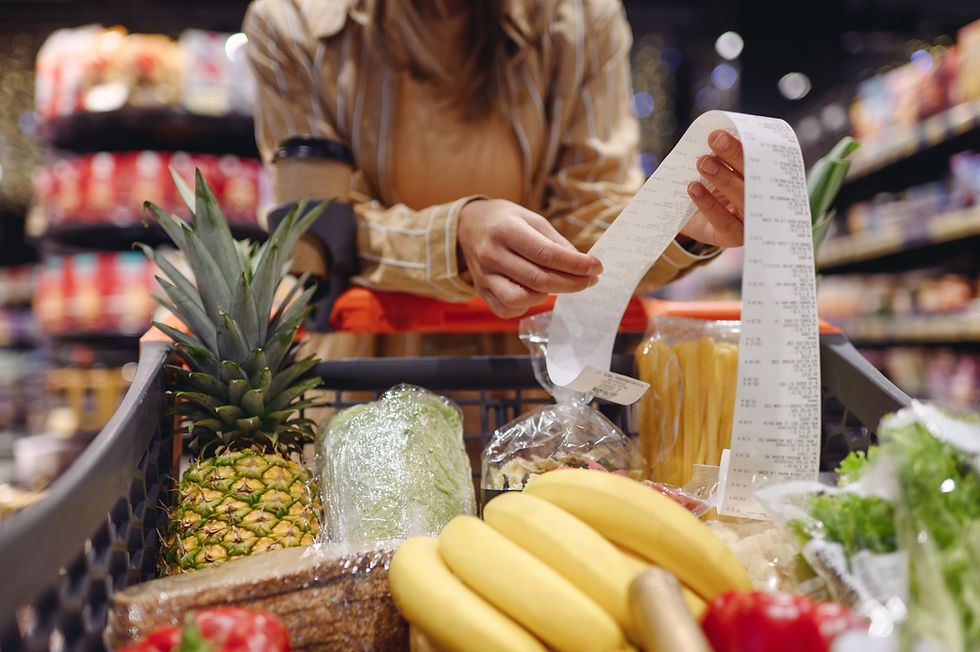Eggs Prices Cool, But Other Groceries Skyrocket Amid Tariffs
- Family Compassion

- May 12
- 4 min read

American consumers are facing persistently high grocery prices in 2025, with the cost of everyday staples like eggs and meat remaining significantly elevated compared to previous years. Despite recent small declines in some categories, shoppers are confronting a new reality of higher food costs that shows little sign of returning to pre-pandemic levels.
Egg Prices: The Rollercoaster Continues
Egg prices, which have become something of a barometer for grocery inflation, illustrate the challenging landscape. After skyrocketing to $6.55 per dozen in mid-March—nearly triple what consumers paid just three years ago—prices have moderated slightly to $5.45 by late April. While the dollar drop provides some relief, prices remain approximately 50% higher than this time last year.
Consumer psychology appears to be shifting in response to these sustained high prices. Market research firm Numerator reports that shoppers now consider $5.56 an acceptable price for a dozen eggs—a remarkable increase from January, when that figure stood at $4.90. This rapid upward adjustment in consumer expectations suggests many Americans are reluctantly accepting elevated food costs as the new normal.
"Consumers have experienced sticker shock for so long that it's beginning to wear off," explains Dr. Elena Martinez, consumer economist at Northwestern University. "After two years of volatile food prices, many shoppers have mentally reset their baseline expectations—often without even realizing it."
Broader Impacts Across the Grocery Cart
The price pressure extends well beyond eggs. Ground beef costs nearly 10% more than last year, while chicken breast prices have increased 2% in just the past month. Though some items like bacon and orange juice have seen modest price decreases, the overall trajectory of food costs continues to strain household budgets.
These persistent increases have forced many families to make difficult spending choices. According to recent survey data from consulting firm KPMG, Americans plan to reduce summer spending on discretionary categories like clothing, furniture, and travel, while actually increasing their grocery budgets. This reprioritization reflects both the essential nature of food purchases and consumers' expectations that prices will continue to rise.
"People are bracing for even higher grocery bills in the coming months," says Heather Rice, consumer retail tax leader at KPMG. "Tariffs have gone from background noise to front and center for consumers—and their grocery receipts show it. Many are drawing a direct line between trade policies and the prices they're paying at checkout."
Trade Tensions Cast Long Shadow Over Food Markets
The connection consumers are making between trade policies and grocery prices appears well-founded. Since President Trump dramatically expanded his global trade war in April, uncertainty has rippled through agricultural markets and supply chains. While overall inflation moderated to 2.4% in March from 2.8% in February, many economists warn this improvement could
reverse as the full effects of new tariffs work their way through the economy.
The White House has repeatedly pointed to progress in trade negotiations, particularly with the UK, and the president has claimed that "almost all costs" have fallen during his administration. However, data from both private research firms and government agencies contradict this assertion, showing ongoing price increases for many common consumer goods.
"The tariffs implemented over the past three months have already affected pricing across numerous categories," explains Martin Goldberg, chief economist at Capital Research Group. "When you add import taxes of 25% or more to products or their components, those costs inevitably reach consumers, regardless of political messaging suggesting otherwise."
Agriculture Exports Caught in the Crossfire
American farmers and food producers find themselves particularly vulnerable as trade tensions escalate. The United States exports approximately 20% of its pork production, along with about 15% of both chicken and dairy output. As trading partners implement retaliatory tariffs, these crucial export markets are increasingly at risk.
Chinese importers recently canceled delivery of 12,000 tons of American pork—the largest such cancellation since 2020—signaling potential trouble ahead for U.S. agricultural exporters. Industry associations have warned of a "full-blown crisis" if foreign buyers continue to pull back from American products.
Paradoxically, this export disruption could eventually lead to lower domestic food prices in certain categories. "If significant quantities of meat and dairy products originally destined for export markets remain in the U.S. due to trade barriers, we could see downward pressure on prices for those specific items," explains Michael Swanson, chief agricultural economist at Wells Fargo Agri-Food Institute.
Such price decreases would benefit American consumers but devastate farmers already operating on thin margins. The agriculture sector has raised alarms about the situation, noting that short-term consumer benefits would likely be outweighed by long-term damage to domestic food production capacity.
Looking Ahead: Uncertainty as the Only Certainty
As summer approaches, grocery shoppers face continued uncertainty about food costs. Corporate executives across the food industry have signaled that additional price increases may be coming, citing ongoing supply chain disruptions, labor shortages, and trade policy uncertainty.
Consumer sentiment recently hit a 12-year low according to the Conference Board's closely watched survey, with many households anticipating rising inflation through the remainder of 2025. This pessimistic outlook appears to be influencing spending decisions, with more Americans prioritizing essential purchases while cutting back elsewhere.
.png)


